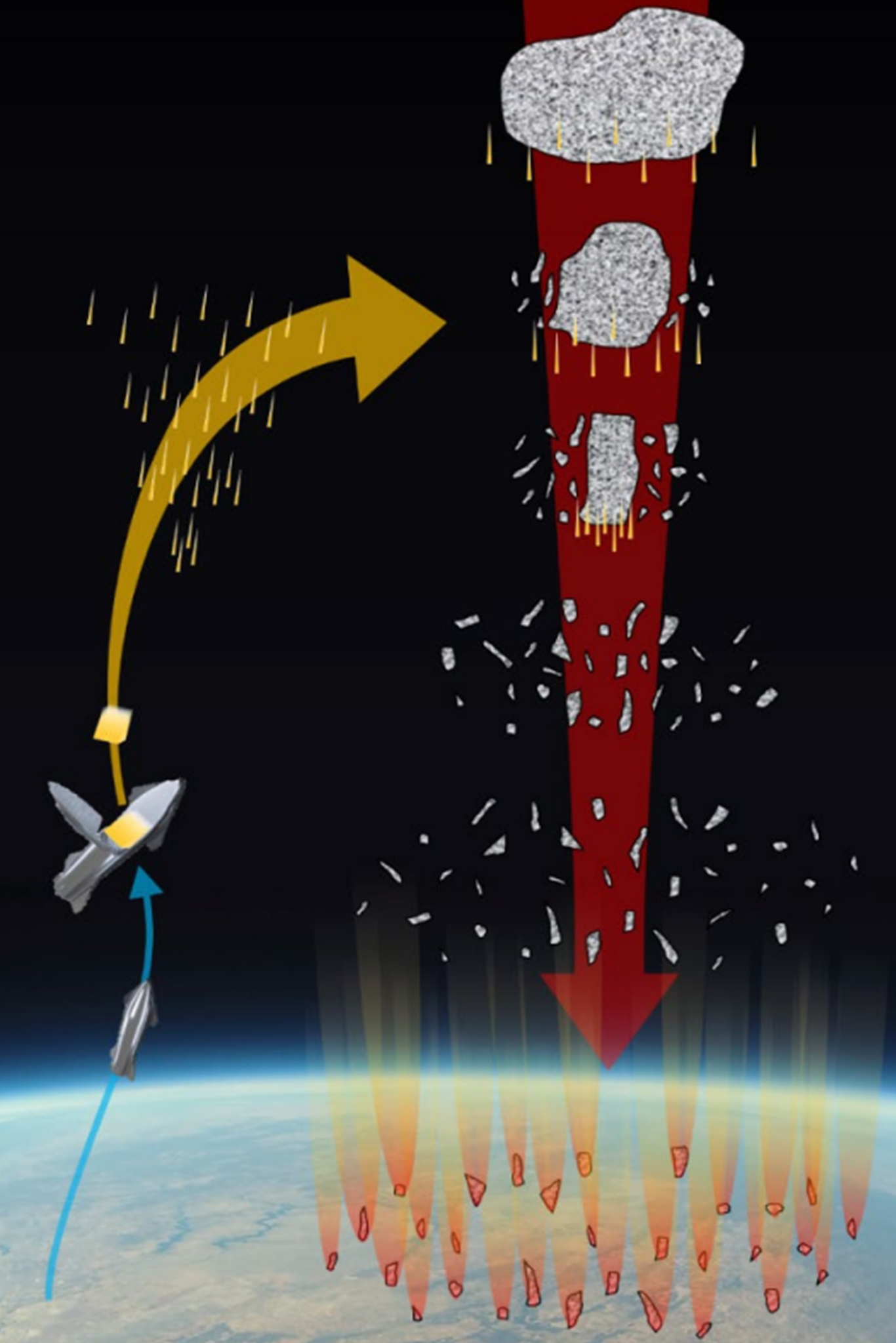PI - Planetary Defense
Philip Lubin
University of California, Santa Barbara
The traditional approach to planetary defense consists of momentum transfer between the impactor and the threat that changes the threat orbit such that it misses the Earth, which is generally known as “deflection.” The PI approach is different in that we do not use momentum transfer, but rather energy transfer. We do not mitigate the threat by requiring it to miss the Earth, but rather we explore mitigating the threat by pulverizing it and then using the Earth’s atmosphere as a shield. This turns out to be incredibly effective and allows for extraordinarily short mitigation time scales. The PI method involves an array of small hypervelocity kinetic penetrators that disassemble and fragment an asteroid or small comet (more generally referred to as “bolides”). The resulting material from the breakup is referred as “fragments.” The method effectively mitigates the threat by using the Earth’s atmosphere to dissipate the fragment energy. This system allows for a practical and low-cost terminal solution to planetary defense using existing technologies. The approach works in extended time scale interdiction modes where there is a large warning time, as well as in short interdiction time scenarios with intercepts of minutes to days before impact. In the terminal interdiction mode, the bolide fragments of roughly <10m diameter allow the Earth’s atmosphere to act as a “bullet-proof vest,” where the fragments either airburst in the atmosphere, with the primary channel of energy going into spatially and temporally de-correlated shock waves, or miss the Earth entirely in extended time scale interdiction modes. When compared to the damage caused by the un-mitigated threat, this method of spatially and temporally distributing the fragment airbursts appears to be extremely effective. We have also shown via simulation that the method greatly reduces ground damage when compared to un-mitigated cases. The proposed study aims to better understand the physics of hypervelocity impacts on bolides with specially design penetrators and how to more efficiently fracture them into sufficiently small sized fragments. We are performing simulations in partnership with NASA Ames’ HEC supercomputer center using the LLNL arbitrary Lagrangian-Eulerian (ALE) hydrodynamics code ALE3D to test different bolide models and to determine how they might break apart when hit with specially designed impactors. Preliminary simulations of this type have shown that the most common types of asteroids can be easily disrupted into sufficiently small pieces with little enough mass in impactors to make pre-existing launch vehicles viable for use in a future planetary defense system. The resulting fragment cloud then disperses radially outwards during the time between interception and impact with the Earth. If the intercept is performed early enough or with sufficient energy, then the fragments disperse into a cloud large enough to miss the Earth entirely. If the intercept is performed in a terminal mode with short warning time, the fragment cloud enters the atmosphere. Since the fragments are of sufficiently small size, none of them make it to the ground, but rather airburst high in the atmosphere. This de-correlates the fragment airbursts and distributes the energy of the original parent bolide, and preliminary simulations have shown that the resultant acoustical waves and optical flashes produced are below significant damage thresholds and that ground damage is vastly reduced.
Phase II of this project involves greatly expanding upon the above simulation efforts, as well as an exploration of key steps on the roadmap towards an operational planetary defense system. Such steps include ground testing of instrumented penetrators and synthetic targets, studies of atmospheric chemistry effects, studies of pre-existing and near-future launch vehicles for the production of feasible mission profiles, and the study of a high-cadence all-sky survey.

































